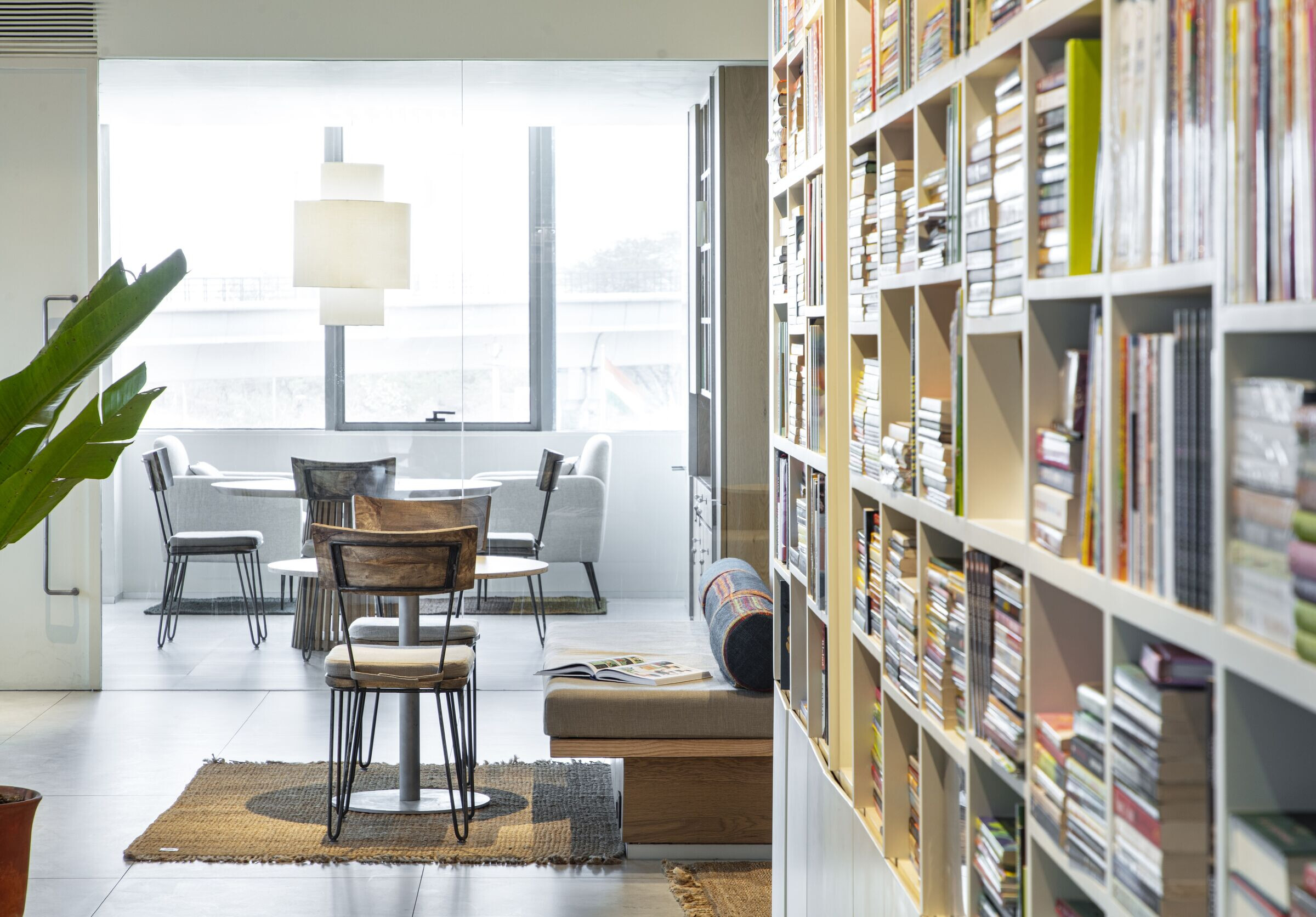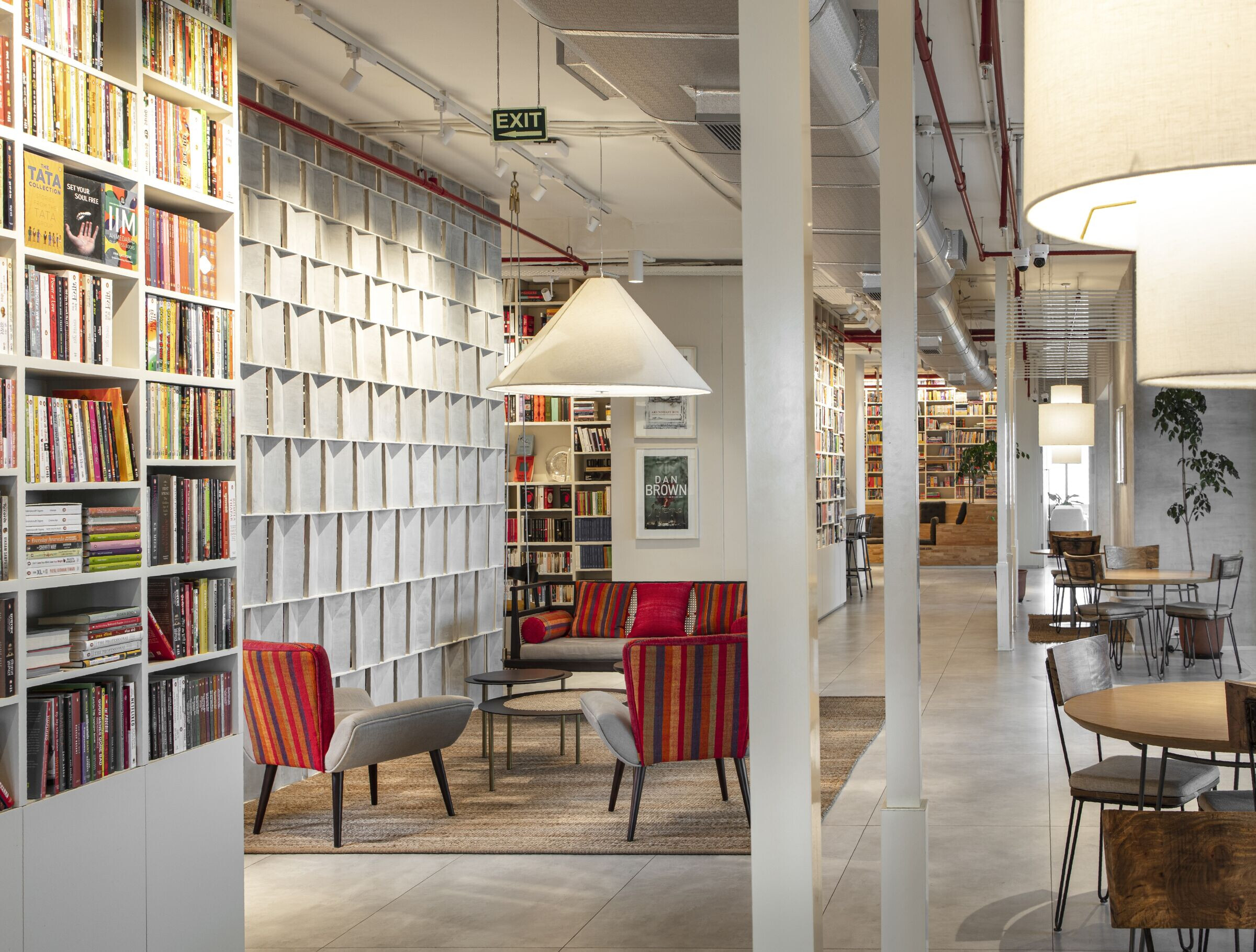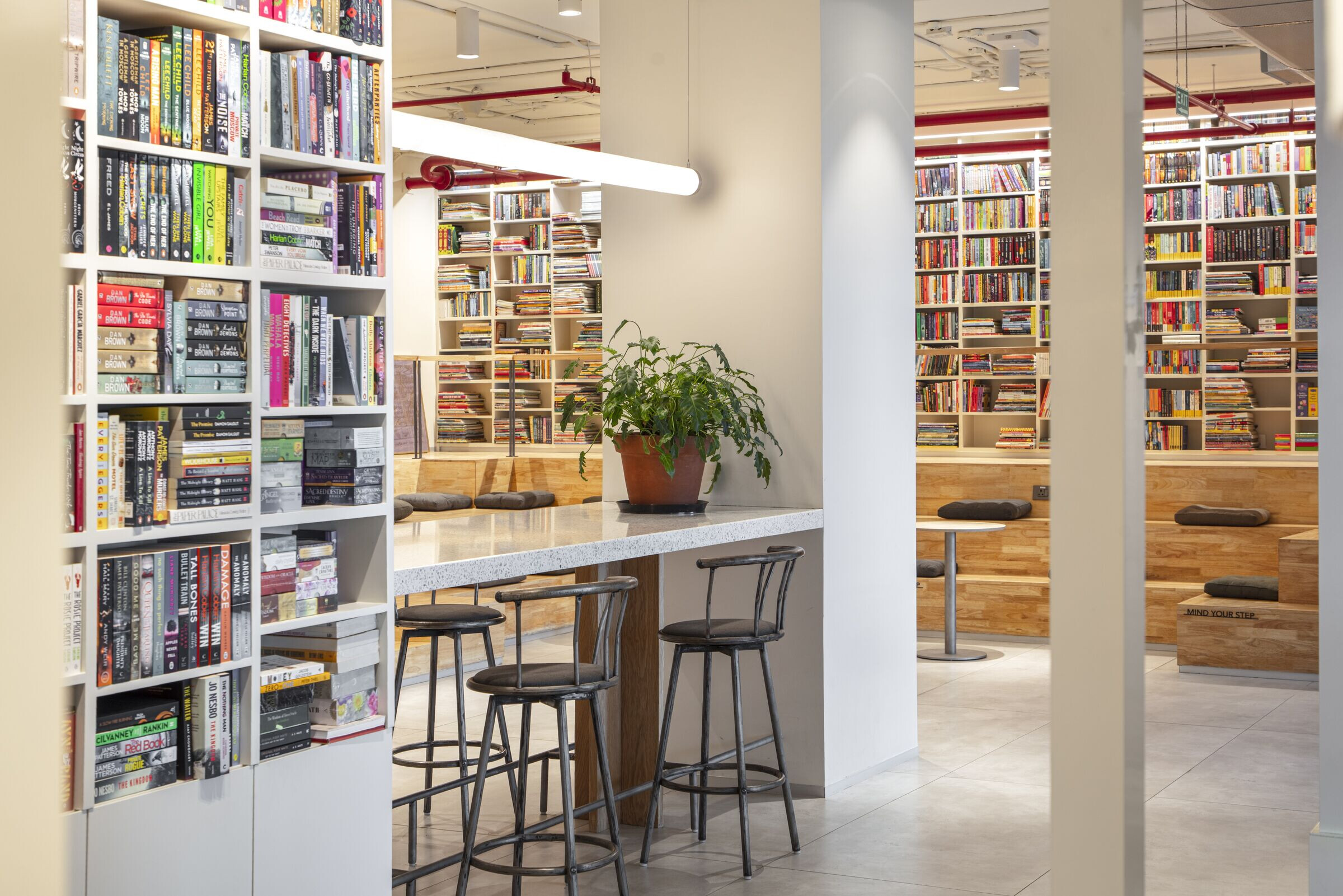A Vibrant Work Environment that Fosters Creativity and Collaboration
Penguin Random House, a globally renowned publication house with a rich history spanning close to a century, is dedicated to encouraging a universal passion for reading by creating books for everyone. With an impressive annual publication of up to 70,000 digital and 15,000 print titles, the company holds a special place in the hearts of readers worldwide.


Designed by SJK Architects, Penguin Random House India's new office headquarters in Gurugram responds to the evolving landscape of work environments. With the company’s transition from an office-first work model to a hybrid one, the design creates a post-pandemic workspace that encourages meaningful exchange and collaboration.

Cultivating a Collaborative and Inspiring Work Environment for Storytelling
Three common clusters (Courtyards), connected by passageways (Streets), form the social heart of the office. These clusters offer diverse seating options and facilitate varied ways of working, be it individually, in small groups, or in large groups. The central cluster, which marks the entrance to the office, and the eastern cluster, resemble living rooms for storytellers, featuring a mix of lounge and round-table seating. The western cluster, on the other hand, houses a coffee bar and has an amphitheatre for large team catch-ups.


Meeting rooms, cabins, and workstations for individual use are strategically arranged around these clusters to create a welcoming atmosphere. Terrace seating along the corridor acts as public seating accommodating two people in each pod and transforms the large corridor into a meandering street with humble proportions. All these areas receive ample natural light from the north, east, and west. While primarily serving as individual and/or formal workspaces for creative and non-creative teams, the workspaces break away from traditional formality as the smaller cabins can be adapted into meeting rooms when needed.


These versatile spaces enable the users to choose their preferred settings for various activities, whether it's a casual catch-up over coffee, a relaxed conversation with authors, or a focused work session. The result is an environment that encourages users to personalise their workspace, fostering a conducive atmosphere for creative productivity.





































